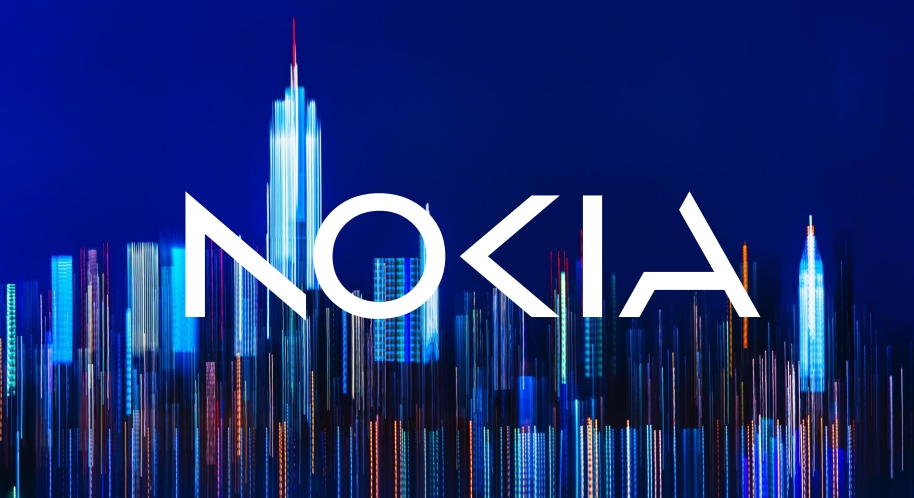Nokia's new boss must tackle Trump tariffs and mobile uncertainty
Justin Hotard's first week as CEO of Nokia coincided with "Liberation Day," President Donald Trump's scattergun discharge of tariffs at friends and foes alike. The plan is to revive a US economy that did not seem badly in need of revival, after growing 2.8% last year compared with the European union's 1%. But tariff wars have never historically produced winners. As an American citizen, Hotard is in the unenviable position of managing a European company that could suffer under the latest US measures.
Tariffs may be uppermost in his mind as Hotard lands in the hot seat. Even after some mobile setbacks, North America is a huge market for Nokia, accounting for 28% of revenues last year. Its biggest growth opportunity arguably lies in selling Internet Protocol and optical products to US data centers.
The former boss of Intel's data center and artificial intelligence (AI) group, Hotard was hired largely for that reason. "If you look at the market and look at the world, the US is an important market for us and so that is one element we consider – experience from that technology business there," said Sari Baldauf, Nokia's chair, when Hotard was introduced as the CEO successor to Pekka Lundmark in February.
Nokia's recently concluded $2.3 billion takeover of Infinera, a US optical equipment specialist, appears well timed. By giving Nokia an optical manufacturing presence on US soil, it should help the Finnish vendor dodge some of Trump's fire. The US president has promised tariff exemptions for companies making products in America. But it's unlikely Nokia can meet all US demand through local manufacturing, and the company has acknowledged it does not have US suppliers of critical components.
"The reality, of course, is that when you got to the component level, all the way to semiconductors and printed circuit boards, there is very little manufacturing capacity available in the US, and those types of supply chains take years and years and years to build," said Lundmark at a press conference in Barcelona last month. "What businesses need is predictability, and that is something that we don't really feel we have at the moment."
A base tariff of 10% on all imports – rising to as much as 65% for some imports from the components workshop of China – means Nokia could face higher manufacturing costs. Passing those on to customers might upset demand. Absorbing them would squeeze margins already under pressure. As part of the cost-saving program launched by Lundmark, Nokia cut 10,400 jobs between September 2023 and the end of last year. Company headcount has tumbled from about 103,000 in 2018 to 75,600.
Healthier shape
Yet, in many respects, Lundmark leaves Nokia in a stronger position than he found it upon succeeding Rajeev Suri as CEO. Since September 2020, its share price has gained 25%. Its sales for the third quarter of 2020, Lundmark's first in charge, fell 3% year-over-year on a constant-currency basis, and its operating margin, using Nokia's preferred non-IFRS measure at the time, was just 6.7%. For the final quarter of 2024, the company reported revenue growth of 9% and a comparable operating margin of 13.6%. It booked almost €4.9 billion (US$5.4 billion) in net cash, up from €1.9 billion ($2.1 billion) in September 2020.
In a market that has rapidly shrunk since 2022, Nokia's mobile networks business group also looks healthier. That is not obvious from examining financial results, which show sales fell 21% last year, to €7.7 billion ($8.5 billion). The operating margin at this unit, still Nokia's biggest, also shrank from 7.4% in 2023 to 5.3%.
Yet this was probably outside Nokia's control. Overall radio access network (RAN) market sales dropped $5 billion last year, to $35 billion, according to Light Reading sister company Omdia. Nokia was also clobbered by the loss of a big contract with AT&T in the US. But the main explanation for the loss seemed to be AT&T's desire to have a single supplier of critical network elements across all sites, including service management and orchestration technology. The natural choice was its biggest existing supplier, and that meant Ericsson.
Notwithstanding this upset, Nokia's mobile network products look more competitive now than they did when Lundmark took charge. The company's recovery had already started then under the mobile networks leadership of Tommi Uitto, who replaced Marc Rouanne in November 2018. Besides diversifying Nokia's base of chip suppliers, Uitto has phased out the margin-squeezing field programmable gate arrays used in the initial 5G products. There have been no major contract losses besides AT&T. In March, Nokia claimed to have grown its global footprint by a net figure of 30,000 mobile sites since the start of 2024.
This has not ended the recent speculation about a possible US-led takeover of Nokia or its mobile assets. It would suit the MAGA enthusiasts bothered by the lack of a major US-headquartered RAN vendor. But it would be unlikely to please most of Nokia's mobile customers, as Hotard may have been told.
After the AT&T loss, Nokia's only big customer in the US is T-Mobile. If other countries retaliate against Trump with their own tariffs, the mobile operators served by a US-headquartered Nokia successor could face a double whammy of tariffs: US charges for sourcing components from overseas, passed on by Nokia; and tariffs imposed on US producers by other countries.
It's also inconceivable that AT&T would bring its Nokia swap-out to a juddering halt simply because Nokia's mobile business has changed nationality. A significant amount of the Nokia equipment AT&T is removing from sites has not fully depreciated, Lundmark told Light Reading when the decision was announced. The removal is already likely to have come at considerable cost to AT&T, Ericsson or both. A U-turn at this stage would make no financial sense to investors and would be hard to explain strategically.
Good optics
Grappling with questions about mobile may consume much of Hotard's early attention. Elsewhere, there seems to be less to worry about. The network infrastructure business group has recently been on a roll, reporting year-over-year sales growth of 17% for the final quarter of 2024, on a constant-currency basis, to about €2 billion ($2.2 billion). Combining Infinera with Nokia's optical business poses some degree of execution risk. But there is limited customer overlap, and parts of the product portfolios look complementary. It is a far cry from the €15.6 billion ($17.3 billion) takeover of Alcatel-Lucent in 2016, subsequently blamed for some of those problems with Nokia's initial 5G products.
Nokia's much smaller cloud and network services business, which made about €3 billion ($33 billion) in sales last year, is also well regarded in a relatively competitive market. Its decision under Lundmark to quit work on cloud infrastructure, and offload those assets to IBM's Red Hat, contrasts with Ericsson's ongoing efforts to sell both the infrastructure and the applications that run on it.
The rationale is that Nokia cannot compete against the big infrastructure players like Amazon Web Services (AWS), Google and Microsoft and is better off concentrating on the development of "cloud-agnostic" applications deployable on any platform. That appears to suit many big telcos whose strategy is to have a single cloud platform for applications provided by multiple vendors.
Geopolitics and commercial realities mean Hotard is unlikely to enjoy much of a honeymoon period at Nokia. The temptation for any incoming CEO is to make some radical changes to management or organizational structure, if not company strategy, and have an immediately visible impact that justifies the executive rewards. But the Nokia of today is a quite well-oiled machine that operates in challenging conditions. Any tinkering will have to be done with extreme caution.





